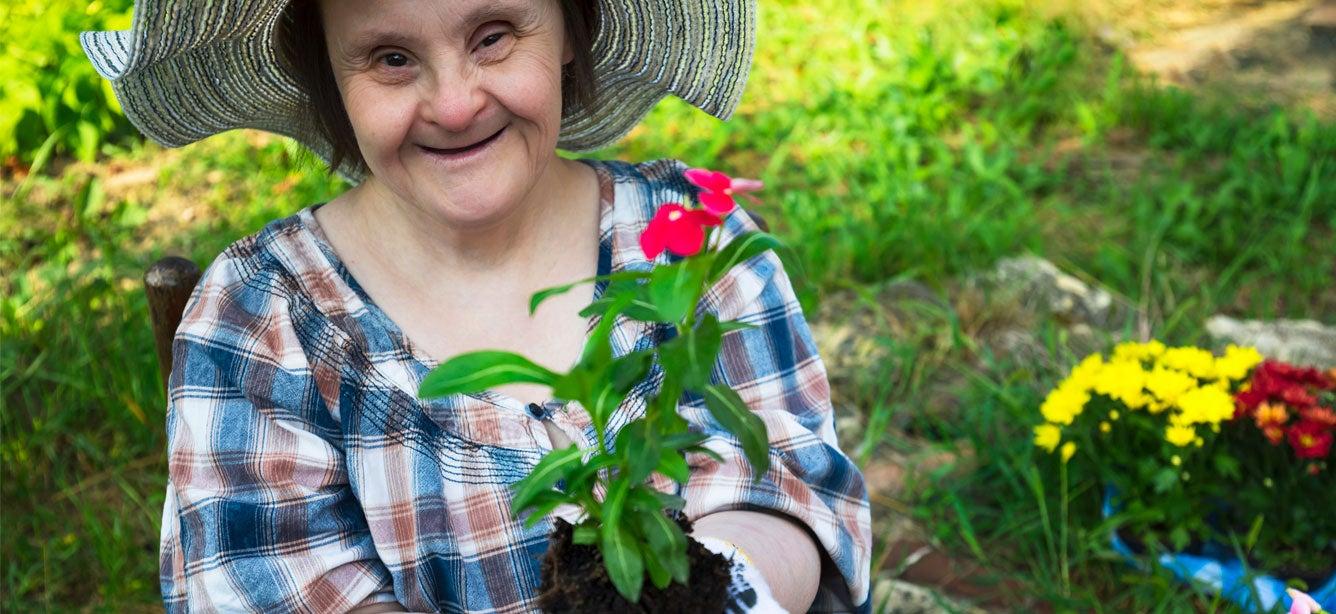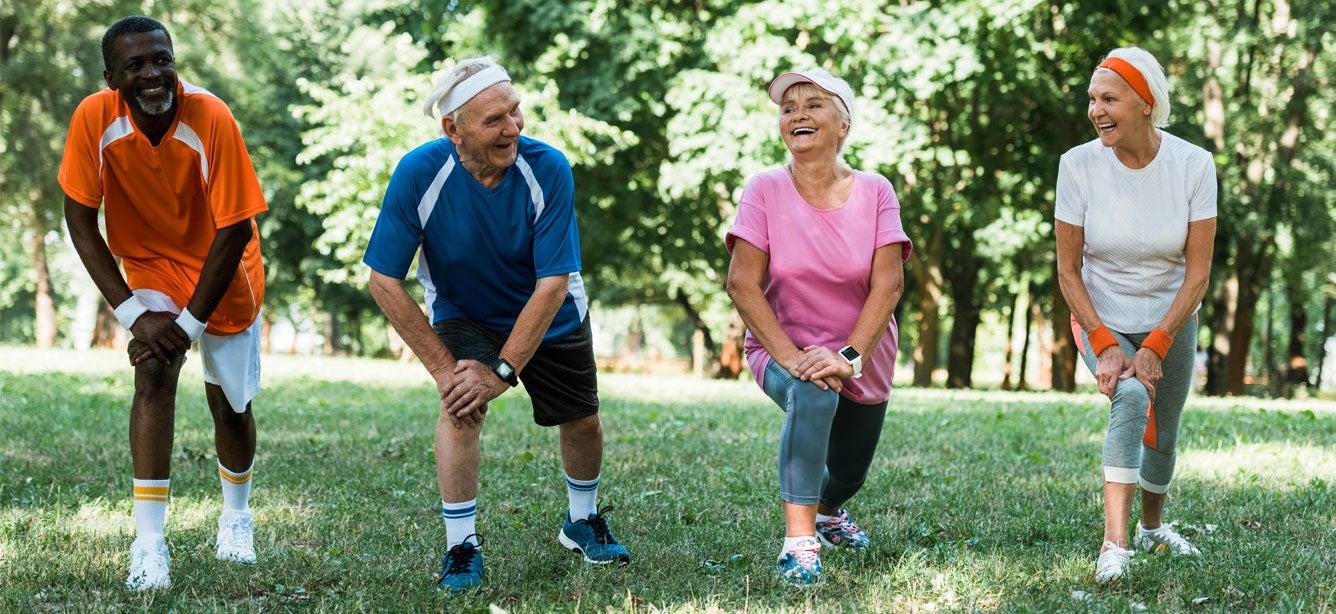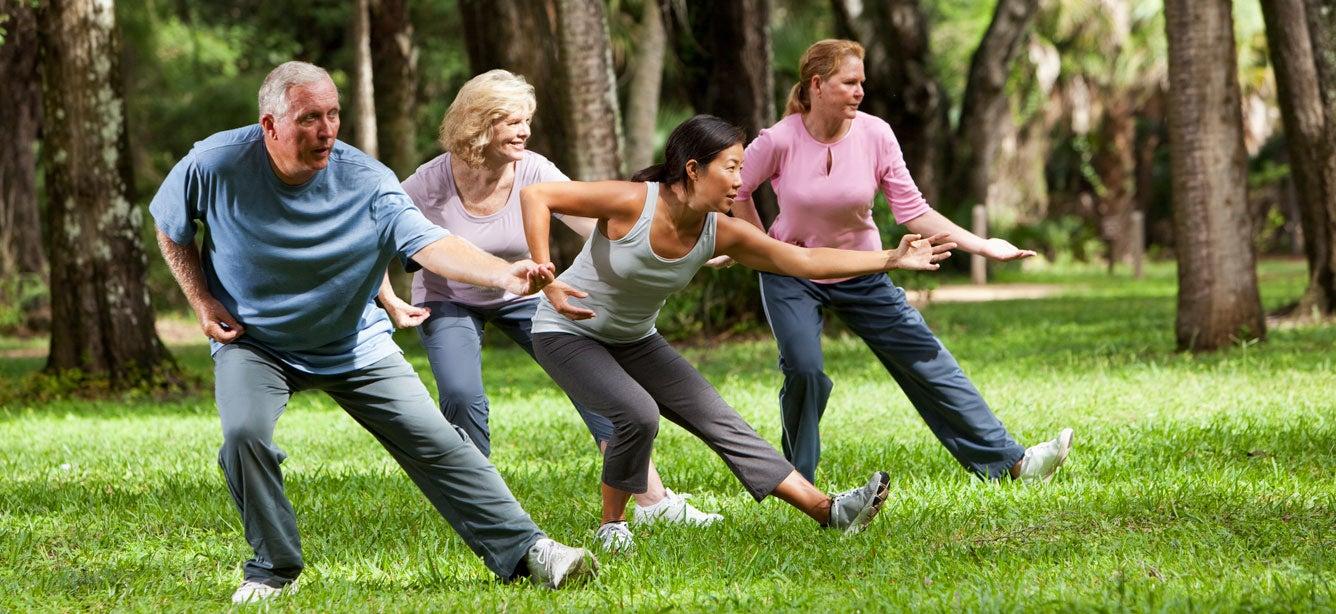Creating Greater Access to Chronic Disease Self-Management Education for People with Disabilities
13 min read

Chronic diseases are the leading causes of death and disability in the U.S. When compared to those without a disability, people with disabilities have higher rates of many chronic health conditions, including arthritis, asthma, cardiovascular, diabetes, high blood pressure, and high cholesterol. The prevalence rates are higher among people with a cognitive limitation than among those with no disability, and people with physical disabilities have significantly higher rates than both groups for all of the above conditions.1 Additionally, people with disabilities are more likely to have multiple chronic conditions. These facts demonstrate the need for effective strategies to enroll people with disabilities in chronic disease self-management education (CDSME) programs.
Over a two-year period (Sept. 1, 2013 – Aug. 31, 2015), 58.6% of 89,334 CDSME participants responded to the question, “Are you limited in any way, in any activities, because of physical, mental, or emotional problems?” Of that group, 24,111 (46%) answered “yes.”
This data suggest that state and community-based organizations are making inroads to provide CDSME to adults with disabilities. Yet, there is still much work to do.
To inform organizations about effective strategies to increase the reach among adults with disabilities, NCOA developed a tip sheet, Engaging People with Disabilities in Evidence-based Programs.
How to build inclusivity into outreach for Chronic Disease Self-Management Education (CDSME) programs
When considering reaching out to and serving people with any type of disability, begin by examining to what extent your state, community, and organization provide opportunities for people with disabilities to access and fully participate in programs and services. Inclusion involves identifying and removing barriers that might limit access. It means requiring that policies and practices are in effect to assure that “everybody has the same opportunities to participate in every aspect of life to the best of their abilities and desires.”2 It also means holding workshops in public places that are accessible for people with disabilities.
Massachusetts emphasizes the importance of incorporating inclusivity into program processes and daily practices. They developed a power point presentation, My Life, My Health Welcoming Workshops: Building Inclusivity into Workshops and Trainings, which can be used to educate staff and volunteers about inclusivity. It covers physical access and environment, logistics, recruitment, communication, etiquette, and more.
Oregon and Washington teamed up to offer the webinar Creating Welcoming Programs for CDSME master trainers, lay leaders, and host organizations interested in offering self-management programs for people with disabilities.
South Carolina developed Watch Your Language, general guidelines for staff and volunteers involved with program implementation regarding use of preferred language. The guide is included in the training packet for new leaders, master trainers, and program coordinators.
Wyoming developed an inclusivity training module for new leaders to understand tips for using person first language, modeled through a CDSMP brainstorming activity.
How to develop partnerships to increase your chances of reaching people with disabilities
Partnerships with disability service and advocacy organizations, such as those described below, are important for reaching people with disabilities.
Centers for Independent Living (CILs) are one of the most frequently reported partners to help increase access to and use of CDSME programs among people with disabilities.
Partnerships have been formed with CILs in Alabama, Michigan, New York, Rhode Island, South Carolina, Utah, Virginia, and Wisconsin. Some states, such as Utah and South Carolina refer people with disabilities to local workshops and also host workshops led by staff from CILs. In other states, such as New York, CILs (also known as ILCs) are helping to develop promotional materials to enhance outreach and recruitment for people with disabilities.
The Centers for Disease Control and Prevention (CDC) State Disability and Health Programs also offer potential to increase the reach among people with disabilities. The 18 funded programs were established to inform state-level policy and practice that is inclusive of people with disabilities. Goals of the CDC initiative include increasing access to health care and health promotion and wellness programs, as well as removing barriers to participation in community programs. New York’s Disability and Health Program is exploring the possibility of having CDSME workshops delivered in American Sign Language (ASL).
While largely an untapped resource, some states (Missouri, New York, Oregon, and Rhode Island) are collaborating with their State Disability Agencies and regional or local Disability Councils and Boards to make CDSME inclusive to people with disabilities. Michigan is working with four Regional Inclusive Community Coalitions that operate under the Michigan Developmental Disabilities Council, and South Carolina promotes workshops via the local Disability Boards.
A variety of other partnerships with disability organizations have been formed. For example, Delaware has collaborated with the Delaware Division of the Visually Impaired, assisted living housing, and Easter Seals. Michigan is working with the state Disability Rights Coalition to engage people with disabilities throughout the state.
Tips for tailor your marketing approach among people with disabilities
Using targeted marketing approaches is an important strategy to increase the reach among people with disabilities. Washington developed a fact sheet to guide organizations in recruiting people with disabilities.
Another strategy that some states have used is to place articles in newsletters, and information, such as personal success stories, on websites. For example, Connecticut promoted the Chronic Disease Self-Management Program (CDSMP) via a Center for Disability Rights newsletter article, and Utah created a news article about a woman with arthritis.
Best practices when reaching out specific populations
Below are some ideas for better accommodating people with different kinds of disabilities.
People Who Are Deaf or Hard of Hearing
During a discussion on NCOA’s Healthy Aging online community, Dr. Kate Lorig, founder of the Self-Management Resource Center's suite of CDSME programs, offered the following suggestions to accommodate CDSME participants who are deaf or hard of hearing:
- Consider offering the option of the online version of CDSMP, Better Choices, Better Health
- Conduct CDSMP with an ASL translator
- Train people who are fluent in ASL to become leaders
- Consider offering the Mailed Chronic Disease Self-Management Tool Kit, a self-study version of the program
Additionally, several states have shared successful approaches. Michigan has been offering CDSMP workshops for the deaf community since 2009 by training ASL interpreters to serve as workshop leaders. Because ASL is not signed English, but a language of its own, some people who use ASL may read it as a second language or may not read it at all. Therefore, some participants may need access to the audiobook, instead of the print-version of Living a Healthy Life with Chronic Conditions. Michigan emphasizes the importance of learning about individual needs to assure that the necessary accommodations are made.
New Hampshire is piloting a workshop for the deaf community using CART (Communication Access Realtime Translation), which is the instantaneous translation of the spoken language into text displayed in various forms. The Ohio State University Office for Disability Services is supporting CDSMP by providing interpreters for CDSMP leader training. Washington is partnering with the Office of Deaf and Hard of Hearing to offer CDSME workshops.
People Who Are Blind or Have Low Vision
Some states have held workshops specifically for participants with low vision, while others have held general workshops that include this population.
California developed a Tip Sheet, Diabetes Self-Management Workshop for the Visually Impaired to accommodate individuals with low vision. The document includes overall recommendations, as well as session-specific adaptations.
DSMT-Workshop-for-the-Visually-Impaired
Additionally, after leading a Diabetes Self-Management Program (DSMP) workshop at the Braille Institute in Los Angeles, the following adaptations to the program were made with approval from the Self-Management Resource Center:
- Enlarged font on data forms to 125% to improve readability
- Provided the library with copies of the audio book
- Read the leader script and completed the participant information survey forms individually with each participant (six or seven minutes per person)
- Announced each participant’s name in the group prior to starting the workshop and after break, so that everyone knew who was in attendance
- Announced reactions of participants, for example, “When you were speaking Mary, many people were nodding their heads.”
- For the brainstorming sessions, recorded comments on a note pad and read suggestions back to the group slowly
- Provided props that could be felt, like a nine-inch plate, measuring cups, etc.
- Modified the label-reading activity to ask participants to identify items that most people eat; then participated in a game with calories, carbs, serving size, etc., rather than read labels
- Modified the session time from two and a half hours to four hours, with a one hour break for lunch. Stanford required that breaks be taken between activities, not within an activity
In Massachusetts, no one is singled out as needing an accommodation. If a participant requires special assistance, it is provided prior to or after the workshop or during breaks. Leaders are advised to pay special attention to verbalizing information that is recorded on the charts so that participants can follow along.
New Mexico invites individuals with low vision to sit closer and to let the leaders know if further accommodations are needed. Generally, participants are provided with a copy of the Living a Healthy Life book on CD. However, because the 4th edition of the book is printed in larger font than previous editions, some participants may see well enough to read it.
Virginia partnered with the Department for the Blind and Vision Impaired to purchase the audio version of the Living a Healthy Life book for their clients who attend a workshop.
Washington printed charts in large font for participants with partial sight. They found that many adults with low vision have their own reading machines to enlarge the print materials and learned that Braille tends to be used only by individuals who have been blind since birth.
People with a Mental and Behavioral Health Conditions
At least 75% of people with a serious mental illness have a chronic disease; and chronic diseases are more likely to go undiagnosed or misdiagnosed in individuals with serious mental illness.3
Alabama trained certified peer specialists in several county mental health authorities to serve as facilitators for Living Well Alabama.
Program evaluation results show that participants had significant improvements in exercise, self-reported general health, cognitive symptom management, fewer number of days spent in the hospital, and fewer outpatient visits compared to non-participants. The state also partnered with the Dannon Project, an organization that provides supportive services to people in transition, including addiction recovery and non-violent re-entering offenders.
Arizona’s Living Well Institute has provided support for training and workshop implementation by behavioral health service providers. They developed a training module to educate the public behavioral health sector about implementing CDSME programs for people with behavioral health conditions to improve their quality of life.
Massachusetts partnered with Steppingstone, a community-based mental health provider, to offer CDSMP workshops for their consumers. The majority of workshop participants were under the age of 60 and had a diagnosis of depression.
Michigan has been successful with engaging people with disabilities through two key partnerships, the Michigan Disability Rights Coalition and Community Mental Health (CMH). The partnerships have led to an increase in the number of people with mental health conditions who participate in CDSMP workshops. Another outcome of the partnerships was expansion of the program reach to a younger population since neither agency serves solely older adults. To continue the gains that participants make during the workshops, CMH offers workshop graduates an opportunity to participate in a weekly aftercare support group led by trained peer support specialists. Furthermore, they encourage graduates to become CDSMP leaders when possible to support others with mental health conditions to make positive lifestyle and behavior changes that will lead to better health and quality of life.
New Jersey is leveraging partnerships with Supportive Housing Connection to reach people with mental illness who reside in subsidized housing. Workshops have been held at a recovery center and self-help centers. Consistent attendance was a challenge due to lack of access to the transportation by a number of participants. Also, the transient nature of some of the participants was a barrier to regular attendance and completion of their action plans. A key lesson learned was that offering a session zero prior to the workshop to explain the program, coordinate logistics, and secure buy-in was important to assure the success of the program.
Workshops were also held at a supportive living facility, a comprehensive behavioral health program, and a local habilitation center. Feedback from participants indicated that the workshop content helped them to solve problems more effectively and live a healthier life. The major challenge that was reported was the length of time for each session.
People with Intellectual and Developmental Disabilities
Developmental disabilities (DD), which occur before the age of 22, can be a significant barrier to access healthcare services. DD includes intellectual disability (ID) and physical disability. The highest prevalence of DD is Autistic Spectrum Disorders, a group of disabilities that can cause significant social, communication and behavioral challenges, and is commonly associated with ID. States are taking a variety of approaches to increase the reach to people with developmental disabilities.
California hosted a CDSMP workshop at the Honeybee Regional Home in Los Angeles County for group home workers that serve individuals with developmental disabilities and their families. Participation in the workshop met the continuing education training requirement for the group home workers.
In Michigan, a research license has been obtained from Stanford University to make modifications to CDSMP that will permit greater participation by people with developmental disabilities, while maintaining fidelity to core elements of the program. Disability services and advocacy organizations are helping to recruit people with disabilities for the study of the modified program.
The New York Quality and Technical Assistance Center (NYS QTAC) has also been granted a research license from Stanford to make modifications in CDSMP for people with developmental disabilities, while assuring that program fidelity is maintained. NYS QTAC is partnering with four disability agencies throughout the state to expand access to adults with disabilities and to learn whether and what type of adaptations are necessary for the program to be effective.
Virginia developed a partnership with Crossroad to Brain Injury, a non-profit agency working with individuals with brain injury. The state received a variance from Stanford to allow a smaller number of participants for each workshop for this population.
Washington signed an agreement with People First, a self-advocacy organization with over 30 active chapters across the state, to engage adults with disabilities and develop marketing approaches specifically for this population. Additionally, they recruited two master trainers from an agency that serves adults with brain injury.
People with Physical Disabilities
Physical disabilities may develop in childhood due to a developmental disability or injury. Many individuals also develop physical disabilities in adulthood as a result of a chronic health condition or injury. The strategies for inclusion are similar and should focus on removing barriers to participation, offering workshops in accessible locations, developing processes that support inclusion, and building partnerships that support people with physical disabilities.
Several states have shared successful approaches for reaching people with physical disabilities. South Carolina has partnered with the Medical University of South Carolina to target African Americans with lupus, which is a condition that frequently leads to disability. New Jersey has collaborated with cardiac rehabilitation, multiple sclerosis, and other disease-specific support groups to reach more people with physical disabilities.
In New York, as part of the federal Balancing Incentive Program to increase utilization of home and community-based long-term services and supports, NYS QTAC secured funding to expand DSMP among Medicaid recipients with type 2 diabetes. As a result of the effort, new partnerships were formed with eight ILCs throughout New York and with the New York State Academy of Family Physicians.
Additional resources
- American Association on Health and Disability (AAHD) is a national, non-profit 501(c)(3) organization committed to promoting health and wellness initiatives for children and adults with disabilities. In partnership with the Susan G. Komen for the Cure, AAHD supports Project Accessibility USA: Removing Barriers for Women with Disabilities, a community project to provide quality services for women with disabilities and address their breast health needs.
- The Centers for Disease Control and Prevention’s (CDC) State-based Disability and Health Programs inform policy and practice at the state level. These programs ensure that individuals with disabilities are included in ongoing state disease prevention, health promotion, and emergency response activities.
- The National Association of State Directors of Developmental Disabilities Services (NASDDDS) represents the state agencies in all 50 states and the District of Columbia providing services to children and adults with intellectual and developmental disabilities and their families. NASDDDS provides leadership, systems innovation, and the development of national policies that support home and community-based services for individuals with disabilities and their families.
- The Independent Living Research Utilization (ILRU) provides research, education, and consultation regarding independent living, home and community-based services, and the Americans with Disabilities Act. Directories of Statewide Independent Living Councils and Centers for Independent Living are located on the ILRU website.
- National Council on Independent Living (NCIL) is the longest-running national cross-disability, grassroots organization run by and for people with disabilities. NCIL represents thousands of organizations and individuals including: individuals with disabilities, Centers for Independent Living, Statewide Independent Living Councils, and other organizations that advocate for the human and civil rights of people with disabilities.
- The National Disability Navigator Resource Collaborative provides disability information and support to Navigators and other enrollment specialists to ensure that people with disabilities get accurate information when selecting and enrolling in insurance through the Affordable Care Act Marketplace.
Sources
1. The Intersection of Disability and Chronic Disease Fact Sheet. Research and Training Center on Measurement and Interdependence in Community Living. Oregon Health and Science University. July 2011.
2. What is Disability Inclusion? Centers for Disease Control and Prevention. Found on the internet at http://www.cdc.gov/ncbddd/disabilityandhealth/disability-inclusion.html
3. Mitros, Melanie and Wilson, Veronica. Healthy Living: Implementation of Stanford’s CDSMP in Behavioral Health. August 7, 2014. Presented to the Arizona Rural Health Association. Slide 5.
This project was supported, in part by grant number 90CR2001-01-00, from the U.S. Administration for Community Living, Department of Health and Human Services, Washington, D.C. 20201. Grantees undertaking projects under government sponsorship are encouraged to express freely their findings and conclusions. Points of view or opinions do not, therefore, necessarily represent official Administration for Community Living policy.



